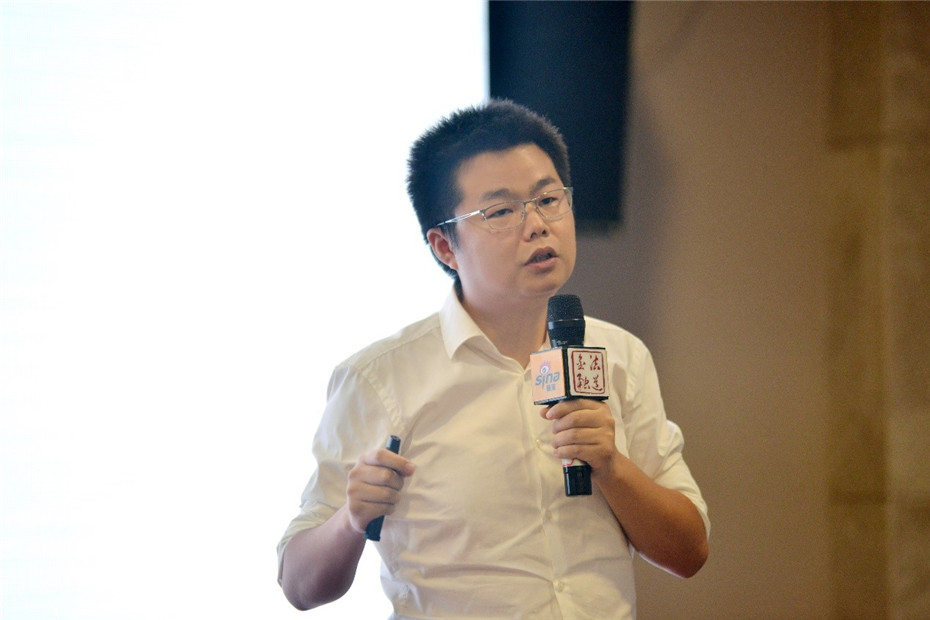CEO SAYS is a new program providing comments of relevant industries for startups. It aims to share CEO’s deep insights into the industries and help startups keep up with the frontier trends.
This time, we invited Yangli, founder and CEO of Xeenho, to share his insights into the micro lending and online lending industry. Liu Yang, general manager of JadeValue Insurtech Incubator (Beijing) also shared his opinions of finding excellent insurtech projects.

Yang Li, Founder and CEO of Xeenho
an online lending platform provides investors with one-click service by its risk rating system
Yang Li says:” Is the online lending platform ready to serve 1.4 billion customers and near 100 million small and micro-sized enterprises yet?”
Since CBRC issued Provisonal Measures for The Control of Online Lending, Administrative Measures for the Record-filing of Online Lendign and Administrative Measures for the Bank Deposit Management, P2P online lending industry has undergone huge changes in recent year. It has entered a new phase of strict regulation, in which how to achieve better development becomes a common challenge for the whole industry:
1. To serve 1.4 billion customers and near 100 million SME (small and micro-sized enterprises) is the historical mission of online lending platform, which is also the goal set by Chinese regulators. They set the limit for online personal lending as 200 thousand and 1 million for enterprises. CBRC intends to keep the online lending within the scope of micro credit lending, a promising industry which haven’t been covered by traditional financial institutions.
2. The online lending platform took the lead by applying advanced technologies, such as big data, AI, IoT and flexible management system. Traditionally, huge potential risks in P2P lending and difficulties in financing for SME are the greatest challenges for traditional financial institution, which has been a heated topic in the practical and academic circle for years. It has been proved that traditional methods won’t bring about expected results in which banking industry did a poor job over the past decades while a large number of issues have emerged in recent ten years. Therefore, new technology and management system are aimed to bring breakthroughs in this area. Hopefully, some of the efforts have already been paid off.
3. Thanks to the dividend policy, interest rate of online lending will continue to drop till closing to its trust level. After new regulations put into effect, online lending platform will be required for registration and documentation by Financial Office and operate with bank deposit management system and ICP licenses. In the future, existing mainstream platforms would grow stronger with increasing public acceptance in a large scale. Meanwhile, the interest rate would drop because of online lending’s low threshold, user-friendly operation and high transparency. Trust level will be a reasonable reference and the decrease of interest rate will allow online lending industry to serve 400 million people.
4. After the implementation of new regulations, the competition in the online lending market would be extremely fierce since thousands of platforms are contending for customers. It is believed that only several hundreds of them would survive. However, if you carefully analyze the features of Chinese market, it’s obvious that there would still be thousands of online lending platforms. The existing hundreds of platforms would be regularized, while plenty of large institution would consider getting legal qualification by applying for certificates. This has happened in trust and micro lending industry before. We don’t know how many companies would survive after the fierce competition, but drastic changes are ensured to take place in the next one to three years.

Liu Yang, General Manager of JadeValue (Beijing)
an investor and incubator that focuses on insurtech industry
Liu Yang says: "An excellent insurtech project should aim high and feet on the ground."
The insurtech industry is developing rapidly. However, SME (small and micro-sized enterprises) are short of talents, capital and technology. So how could SEM take full use of opportunities in insurtech trend?
First, timing. The insurance market in China is still lagged behind those developed countries. There are not many outstanding insurtech companies, which implies a great opportunity for SME during this premature phase.
Second, capital. Capital shortage is what many SME are struggling with. In order to solve this problem, their most important task is to update their business models and products.
Third, talent. Most of the time, members and partners of a successful and mature startup team are not attracted by high salaries but vision of the project or the idea of changing the world.
Fourth, data. If you have a clear goal and model for your project that can provide concrete solutions to solve a true pain point, the data won’t be a problem anymore.
The key to solve the above problems is to make the project more practical. In other word, aim high and feet on the ground. “Aim high” means to broaden your vision, pay attention to the global trend, macroeconomics rules and technology development of higher level. “Feet on the ground” refers that a small company needs to further divide the industry and aims to solve the most pertinent problems. They should focus on how to develop a good product, make everything right and solve a practical problem.
(Welcome to leave a message below and join our discussion in real estate and insurtech!)